The AR-15 is one of the most versatile rifles that money can buy. Its standard 5.56x45mm cartridge is in use worldwide by police and NATO forces, so you know it’s good.
Lately, it seems a popular thing in the gun world to knock the 5.56 cartridge. But mostly that’s just because people want something new, even if they don’t really need something new.
So, maybe you’re looking for bigger AR 15 calibers, something with a little more bang than the 5.56 (pun intended). Never fear, there are some options for you to consider. The most common of these more powerful AR 15 cartridges are:
Table Of Contents
- AR 15 Ammo for Sale
- What to Consider When Buying Alternative AR-15 Calibers
- Caliber Velocity and Weight Chart
- Why Does AR 15 Caliber Weight and Velocity Matter?
- What Caliber is an AR 15?
- 5 Most Common Alternate AR 15 Calibers
- 5 Best AR 15 Ammo Alternatives Deep Dive
- AR 15 Ammo Calibers to Avoid
- What Calibers Can an AR 15 be Converted To?
- AR 15 Ammo Alternatives – Final Thoughts
- Recommended Reading
AR 15 Ammo for Sale
| Product | Price | Where to Buy | |
|---|---|---|---|
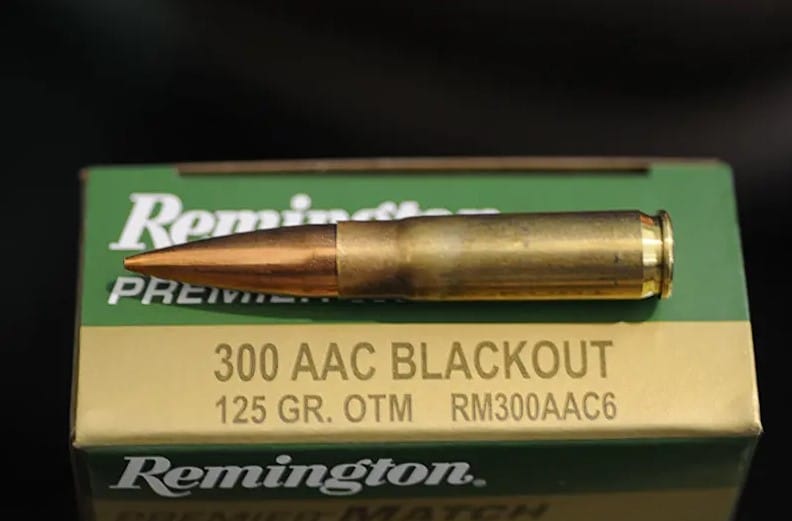 | .300 AAC Blackout | $ | |
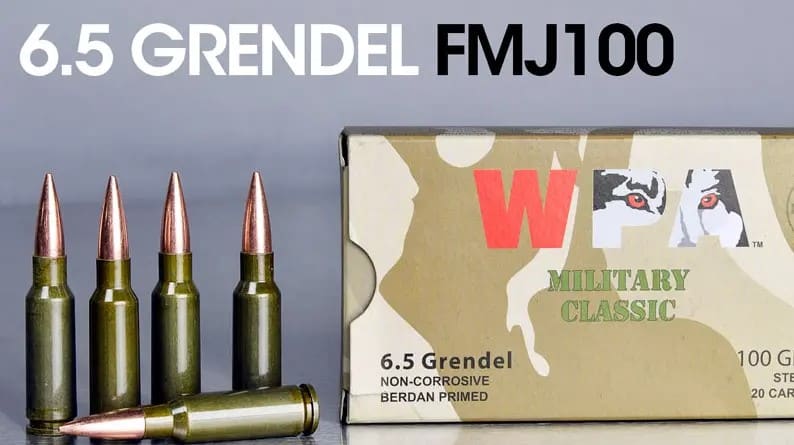 | 6.5 Grendel | $$ | |
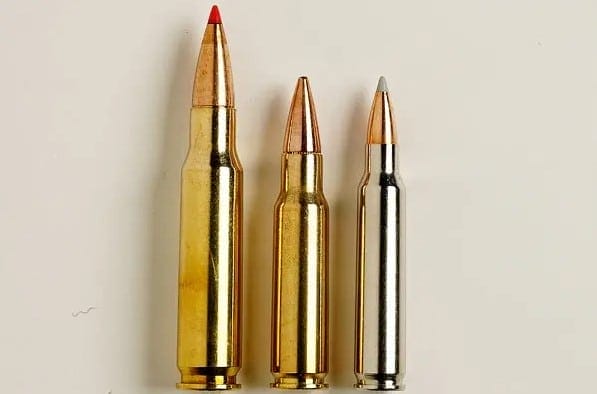 | 6.8 SPC | $ | |
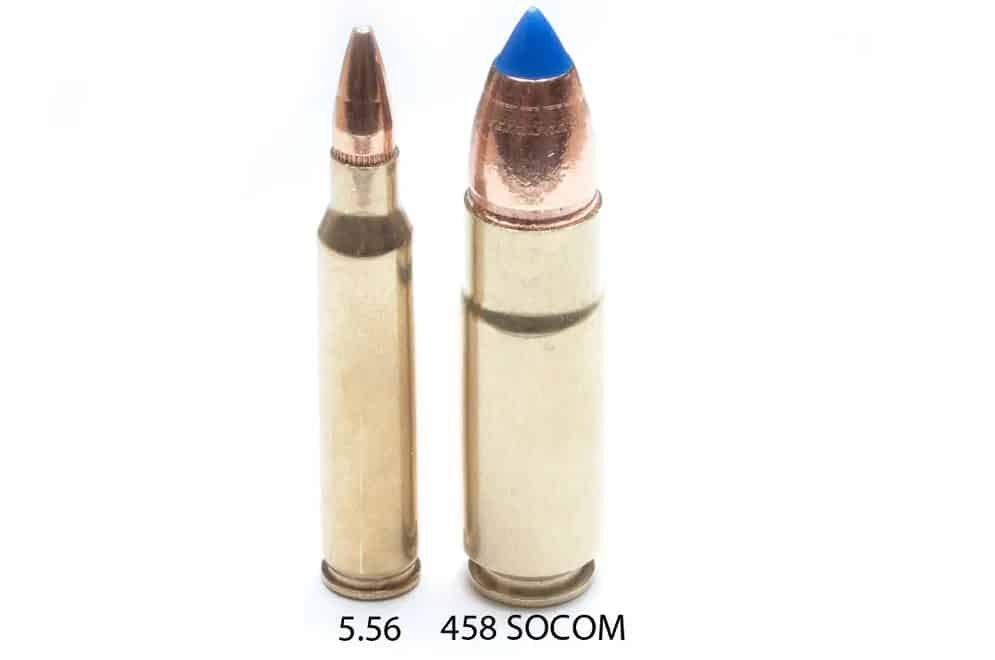 | .458 SOCOM | $ | |
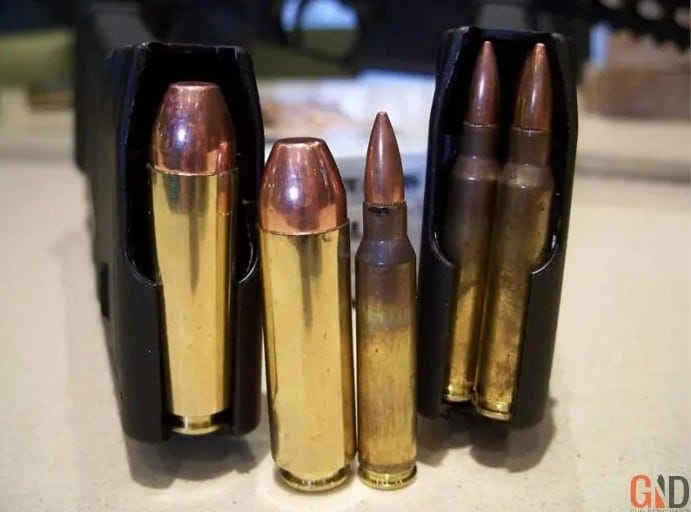 | .50 Beowulf | $$ |
Of course, with each of AR 15 Ammo alternatives, you’ll discover there are both advantages and disadvantages.
What to Consider When Buying Alternative AR-15 Calibers
Making the choice to upgrade your AR has consequences and can affect lives in the real world.
It can make you look like an idiot, never mind the damage to your bank account, if you don’t choose the right AR 15 calibers for the job.
But, what’s the difference between the different cartridges for the AR-15?
There are three basic categories to think about when choosing cartridges for your AR 15 and these three usually involve some compromises between power, cost, and usefulness.
You should also consider the flexibility and availability of rounds (the 5.56, is the most common AR 15 caliber, is readily available).
AR 15 Caliber Power
Everyone knows bigger cartridges are more powerful, right? Not necessarily.
The power of a cartridge depends upon two main factors: velocity and penetration. Though these factors are different, they’re still similar, and one affects the other.
Think of velocity as the engine of a car. It’s what gives the bullet the ability to move. Velocity is defined as: “an object is the rate of change of its position with respect to a frame of reference. Velocity is equivalent to the specification of an object’s speed and direction of motion.”
Consider these velocities and weights.
Caliber Velocity and Weight Chart
| Projectiles | kg | m/sec | KE in Joules |
|---|---|---|---|
| Mass | Velocity | 1/2mv^2 | |
| 12-gauge Shotgun | 0.028 | 564 | 4,453 |
| 30-06 Hunting Rifle | 0.01 | 900 | 4,050 |
| .308 Hunting Rifle | 0.0095 | 823 | 3,217 |
| 7.62 x 39 (AK-47) | 0.008 | 715 | 2,045 |
| .223 (AR-15) | 0.0039 | 975 | 1,854 |
| 357 Magnum | 0.008 | 410 | 672 |
| 9mm pistol | 0.0075 | 353 | 467 |
| .380 pistol | 0.006 | 286 | 245 |
| Hockey puck | 0.165 | 54 | 241 |
| Baseball (120mph off bat) | 0.145 | 53 | 204 |
| .22 Rifle | 0.003 | 335 | 168 |
| Tiger Woods drive | 0.046 | 80 | 147 |
| Baseball (100mph pitch) | 0.145 | 44 | 140 |
Yeah, I’m not getting math involved here, though velocity can accompany some scary mathematical equations. If you’re into math, you can research numbers like the kinetic energy of around. If you’re not, suffice it to say that velocity means motion: the bullet moving through the gap between you and a target.
Bullet weight (also called grain or gr, is a unit of measurement) is the ‘transmission’ of the car engine; it’s what gives the round the ability to move (achieve velocity). This is what causes round penetration, and for both hunting or defense, maximum penetration should be your main thought.
Why Does AR 15 Caliber Weight and Velocity Matter?
Well, light bullets at high velocities will still lack the penetration of heavier bullets moving at medium velocities. The weight gives the bullet its capability to penetrate the target.
Think of it like this: you wouldn’t drive a semi to work every day, nor would you hook up a sub-compact car to a trailer to haul it. Your power-to-weight ratio wouldn’t be sufficient to move the trailer.
So, you can see it’s not exactly easy to define the exact stopping power of any cartridge. There are numerous variables involved, but you don’t have to be a rocket scientist to figure out the basics.
AR 15 Caliber FLEXIBILITY
This is an important factor, whether you’re on a budget or not. Of course, no single firearm can do everything, but certain guns can do most things sufficiently well. The AR-15 is one of those flexible guns.
It’s easy enough to upgrade your AR by adding new uppers and mags. Rather than wasting time (and money) getting all the possible options, you should research the available cartridges for the AR so you’re not tempted to purchase too many cartridges for the job you intend for it.
Consider that you’re probably upgrading for home defense, hunting, or competition shooting. You’re probably tempted to show off by getting the strongest round you can find. But, you’ll pay for that in extra materials, not to mention the impact of said round to your body from recoil.
AR 15 Calibers Availability
It’s not a myth that when you purchase a gun, you have to feed it. This is especially true if you plan to do any target shooting; even if your AR is for home defense, you’ll want to stay sharp with it.
And that means shooting it, regularly.
You won’t want to upgrade your AR to a round that’s difficult to find. And you should take into account the cost of the round you plan to upgrade to. The more rare the cartridge, the higher the cost will be.
Consider the struggle to find AR 15 ammo during a scare, when ammo is in high demand, or when there’s a low supply. Shipping ammo can be banned by states at any time, and once that happens, it can take a lot of time and effort to overturn. California gun owners are well aware of this fact. Buying ammo online has become the best way for many shooters to get their supplies.
None of the alternate AR 15 calibers are going to replace the 5.56. Costs of the 5.56 have come down, but they’re still the choice of NATO and police forces, so getting the rounds might always be a problem, either in cost or supply.
What Caliber is an AR 15?
The AR-15 platform is commonly chambered in .223 Remington or 5.56x45mm NATO caliber. These calibers are essentially interchangeable, as the dimensions of the cartridges are very similar, with the primary difference lying in the pressure specifications. The .223 Remington is generally loaded to lower pressures, while the 5.56x45mm NATO is loaded to higher pressures to meet military specifications.
In addition to the .223 Remington and 5.56x45mm NATO, the AR-15 platform has also been chambered in various other calibers, such as .300 AAC Blackout, 6.5mm Grendel, and .458 SOCOM, among others. These alternative calibers offer different ballistic characteristics and may be chosen based on specific purposes like hunting, long-range shooting, or personal preference.
5 Most Common Alternate AR 15 Calibers
Let’s take a quick look at the common alternate AR 15 ammo rounds and see what kind of changes you’ll need to make to your AR.
AR 15 Cartridge Modification Chart
| Cartridge | Cost of Rounds | Changes Needed | Uses |
|---|---|---|---|
| .300 Blackout | Low | Barrel | Defense, hunting, target shooting |
| 6.8 SPC | Low | Barrel, bolt, mags | Competition, hunting |
| 6.5 Grendel | Medium | Barrel, bolt, mags | Competition, hunting |
| .458 SOCOM | High | Barrel and bolt | Hunting |
| .50 Beowulf | High | Barrel and bolt | Hunting |
You should also compare ballistics for each of these AR rounds.
AR 15 Cartridge Ballistic Chart
| Cartridge | Velocity | Energy | Drop @ 300yds | Effective Range |
|---|---|---|---|---|
| .300 Blackout | 125 gr@2200fps | 1300 ft-lbs | -25” | 350 yards |
| 6.8 SPC | 110 gr@2500fps | 1500 ft-lbs | -19” | 450 yards |
| 6.5 Grendel | 120 gr@2450fps | 1600 ft-lbs | -18” | 450 yards |
| .458 SOCOM | 300 gr@1800fps | 1800 ft-lbs | -53” | 200 yards |
| .50 Beowulf | 400gr @ 1800fps | 2878 ft-lbs | -50” | 200 yards |
So, let’s take a look at these alternative AR round in greater detail and discuss the pros and cons of each.
5 Best AR 15 Ammo Alternatives Deep Dive
1. .300 AAC BLACKOUT (.300 BLK)
The .300 AAC Blackout is also commonly referred to as the .300 BLK or as the 7.62x35mm. It was designed as an intermediate cartridge that could still be used in existing AR-15 type rifles chambered for 5.56. The .300 AAC was designed from the beginning to offer ballistics similar to the 7.62x39mm, like is used in the AK-47 series of rifles but while still using standard AR-15 magazines.
Of course, you may wonder why it wouldn’t be wise to just chamber an AR-15 for the 7.62x39mm to begin with. The answer is because the 7.62x39mm round comes with a cartridge taper that makes it inefficient to load in AR-15 magazines (reliability problems will result).
The .300 AAC has an effective range of around four hundred and sixty meters, with a lower velocity and bullet drop at shorter distances. However, the rounds do offer better ballistic coefficients than the 7.62x39m round does, assuming that you shoot the rounds out of similarly lengthened barrels.
PROS AND CONS OF .300 BLACKOUT
The .300 Blackout offers you a wide variety of different bullet types, offers good ballistics like the 7.62x39mm (if not better), and actually permits very little velocity loss when it is fired out of a shorter barrel.
However, the factory ammunition can also be very expensive and harder to find, and as with the 7.62x39mm, it’s also less adept for long range shooting as well (as noted previously, 460 meters is considered the maximum range for the .300 AAC, but staying under the 300 meter range would be even better).
2. 300 AAC BLACKOUT
As with the .300 AAC, the 6.5mm Grendel (also known as the 6.5x39mm) is another intermediate rifle cartridge designed for the AR-15. But whereas the .300 AAC was designed to be the AR-15’s answer to the 7.62x39mm, the 6.5mm Grendel was designed from the beginning to be a high accuracy and low recoil round at medium to long ranges (up to eight hundred yards).
The 6.5 Grendel has indeed proven to be a very versatile caliber, and it’s now being adopted for other rifle platforms beyond the AR-15, including AK-type rifles and various kinds of bolt action rifles.
In order to fit inside the standard 5.56 AR-15 magazines, the 6.5 Grendel was designed from the get go to be a shorter round with a larger diameter case. Factory loaded ammunition commonly weighs anywhere from ninety up to a hundred and twenty nine grains.
Ballistically, the 6.5 Grendel is superior to the 5.56x45mmm NATO, and offers better terminal energy than both that round and the 7.62x51mm NATO like is used in the AR-10 platform. A 30 round 5.56 magazine will hold 26 rounds of 6.5mm Grendel.
PROS AND CONS OF THE 6.5 GRENDEL
If you want to improve the ballistics of your AR-15, a great option will be to switch out your 5.56 upper for a 6.5 Grendel upper (the 6.5 Grendel upper will be fully compatible on a 5.56 lower). The 6.5 Grendel offers superior terminal ballistics and range than the 5.56 does, and can enhance the performance of your AR-15.
The biggest negative to the 6.5 Grendel is that it will not always feed reliably in 5.56 magazines. Most shooters report that polymer 5.56 magazines will feed the 6.5 Grendel rounds less reliably than the metal GI-style magazines will.
3. 6.8 SPC
The 6.8 SPC, also known as the 6.8mm Remington Special Purpose Cartridge, is a rimless intermediate rifle cartridge that was the result of a collaboration between the United States SOCOM, Army Marksmanship Unit, and Remington Arms as a potential replacement to the 5.56.
Obviously the 5.56 has not been replaced, but the 6.8 SPC can still be a good alternative, especially if you are using a short barreled AR-15.
The 6.8 SPC actually uses the same diameter of bullet as the .270 Winchester does. It was designed to create better ballistics for the AR-15 in the short barreled configuration, such has 10.5 inches and under, while bridging the gap that existed between the 5.56 and the .308.
PROS AND CONS TO THE 6.8 SPC AR 15 Ammo
The 6.8 SPC is a very devastating round that offers twice the ballistics of the 5.56x45mm NATO, but it also only offers those ballistics at shorter ranges.
The 6.8 was designed specifically to increase the terminal effectiveness of the AR-15 at limited ranges, and is therefore best suited in a CQB or short barreled rifles. In this scenario, the 6.8 undeniably excels. For shooting applications at longer distances, however, the performance of the 6.8 SPC begins to fade. The round is undergoing more testing by the United States military.
Additionally, the 6.8 SPC can be very expensive as well, so be sure to take that into account.
4. .458 SOCOM
The .458 SOCOM round was designed due to the apparent lack of stopping power that the 5.56x45mm NATO round was offering US troops stationed overseas in Somalia. Many enemy fighters were having to be hit multiple times by American personnel armed with M4 5.56 rifles, prompting the military (and specifically members of the Special Operations command) to seek out a larger and more powerful round that could still be used in the M4 and M16 rifles in services.
The .458 SOCOM was the result, being designed in 2000 and released in 2001. The .450 SOCOM was designed to accomplish multiple roles at once: it would need to be fired at subsonic velocities when used with suppressors, it would need to be substantially more powerful than the 5.56, and it would need to be fully functional in existing AR magazines.
The .458 SOCOM is indeed fully compatible with the 5.56 AR platform, including most 5.56 magazines, the buffer spring, magazine well, and the buffer. However, the .458 round is much larger, and therefore the double stack 5.56 magazines will act as single stack magazines when they are loaded with the .458 SOCOM. A standard thirty round 5.56 magazine, for example, will hold ten .458 SOCOM rounds.
PROS AND CONS OF .458 SOCOM AR 15 Ammo
The main pro of the .458 SOCOM is its additional stopping power at the expense of range. It’s fair to compare the .458 SOCOM with the .45-70 Government round, which likewise is a mid range rifle caliber but that still packs a significant punch within its ranges.
Many Alaskan hunting guides will often opt for a lever action rifle chambered in .45-70 as defense against dangerous game such as brown bear, but many others will often go with an AR-15 chambered in .458, because it’s a semi-automatic with faster firing and reloading abilities while still offering similar ballistics.
Indeed, the .458 SOCOM is an excellent caliber to use as defense against dangerous big game. However, it also has limited magazine capacity (ten rounds will fit in a standard thirty round 5.56 magazine, as noted) and the ammunition can be pricey and sometimes hard to find.
5. .50 BEOWULF
This is the round that started the big bore AR-15 concept. It’s said to have been developed by the same people who designed the 6.5 Grendel for military use in stopping vehicles at checkpoints as an aid to car bomb prevention. Alexander Arms produces .50 Beowulf uppers for the AR-15.
This monster round packs a punch at both ends and empties your wallet in the process. But the rounds are only produced by a few manufacturers and don’t have premium options for performance hunting.
To keep yourself in ammo, you’ll probably have to learn how to reload. If you’d like to try your hand at reloading, check out our Complete Beginner’s Guide to Reloading Ammo.
PROS AND CONS OF THE .50 BEOWULF AR 15 Ammo
There’s no real advantage to this round for home defense; it’s just as effective as an M855 5.56 round and is a deep penetrating bullet. Likely, it would fully penetrate a bad guy and keep going.
For hunting, it’s powerful enough to take down anything in North America, but the key is to get close to your target and use bullets that open reliably to dump all its energy into your target.
As mentioned above, the AR-15 ammunition is rare and costly. If you really have your heart set on the .50 Beowulf, then you’d be better off learning how to reload if you want to have ammunition at all times.
AR 15 Ammo Calibers to Avoid
Now that we’ve discussed some excellent options for AR cartridge upgrades, let’s talk a bit about cartridges to avoid, because there are some of those, too.
45X39MM
This was Russia’s answer to the 5.56 M16 in the battle for the AK-74. It’s been maiming soldiers since the 1970s and has a horrible reputation.
When used by some bad guys in Afghanistan, these rounds blew up or ricocheted when they hit something like a wall. They didn’t penetrate well, nor did they kill efficiently; they were more likely to cause superficial wounds.
Years ago, the market was flooded with this ammunition, but that source has now dried up. Changing your AR to this configuration won’t gain you any benefits, except possibly cheaper ammo. But overall, it gives you a less effective firearm.
62X39MM
This true .30 caliber AR cartridge fires its 120gr bullets at close to 2200fps from a rifle barrel.While this sounds ideal, it’s really not.
It’s a tapered casing and requires an exaggerated, curved magazine and custom lowers to perform well. It also uses steel-cased ammo with a polymer coating; this doesn’t work well in direct impingement weapons that use the gas from a fired round to cycle the action and reload the next round.
This round isn’t any better than the .330 Blackout and you can’t find it in as many loads. It’s also not easily suppressed, so you’re probably better off going to the .300 Blackout.
But if you’re completely sold on the 7.62, make sure to find a custom lower receiver that moves the pistol grip back to accommodate the magazine required.
What Calibers Can an AR 15 be Converted To?
The AR-15 platform is known for its versatility, and it can be converted to various calibers by changing the upper receiver assembly. Some of the most common AR 15 caliber conversions include: .300 AAC Blackout, 6.5mm Grendel, 6.8mm SPC, 9mm Luger/Parabellum, and even the .22LR.
AR 15 Ammo Alternatives – Final Thoughts
When you’re looking to upgrade your AR-15, you’ll need to consider a compromise between power, cost, and availability of parts and ammunition.
Some AR upgrades come with a high price tag, so you might need to learn about reloading ammo if your heart is set on these AR 15 calibers.
In addition, some of these newer AR 15 calibers may fade away in the future, so you may end up doing another upgrade if your rounds disappear.
Decide what’s the most important job you’re upgrading for: is it hunting, competition, or home defense?
The answer to this question will get you closer to choosing the right cartridge upgrade for your AR-15.
Recommended Reading
Best AR-15 Calibers And Cartridges
AR-15 Furniture and Accessories
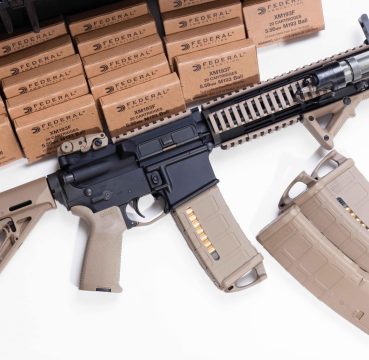


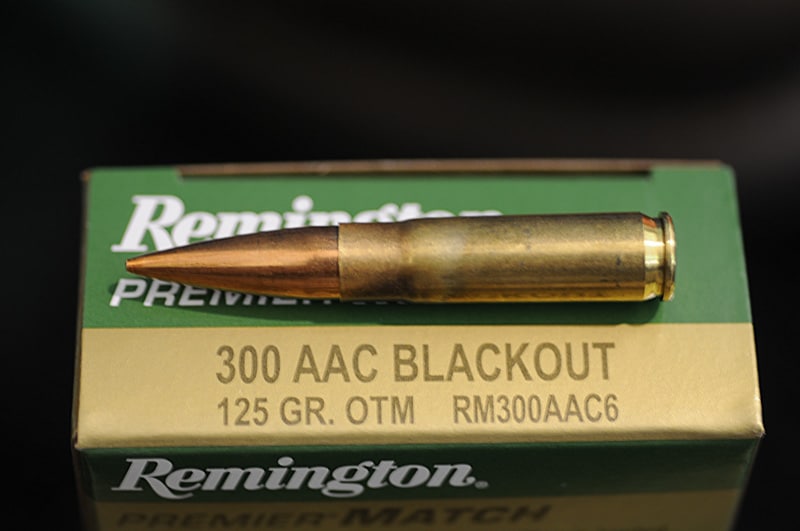
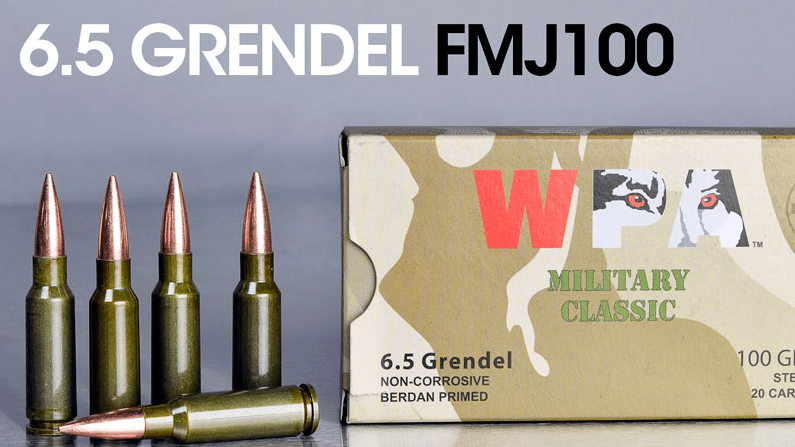


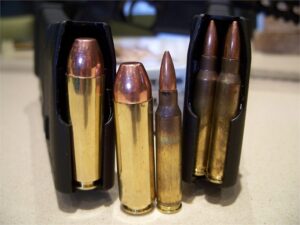










17 Responses
I’d like to see 5.56 added to the ballistics table for comparison purposes.
Good information in the article. I’m with much of the group with regards to the 7.62×39 AR chambering i.e. I’ve had great luck with it. I have a shooting partner who built one first, and we were impressed with the reliability and accuracy (C-Products mag, cheap ammo, converted upper).
I later built a pistol version with PSA’s KS-47 lower which takes AK mags. I’ve got lots of rounds through it with no issues, and it’s sufficiently accurate for a 10″ gun.
The old Russian round has been tested extensively (google it) in short barrels, and it works quite well, some say surprisingly well. To me it makes a much better, cheaper, and safer alternative to the .300 Blackout. I was actually prepping a .300 Blackout build when I learned that the .300 round feeds just fine in a .223 gun. Of course, it blows the gun up if fired, but it feeds just fine. LOL! So, that being the case, since I have .223 guns, I figured it was safer to do the 7.62×39 build. It’s one less thing I have to worry about.
Another good point about the .458 SOCOM is that it was specifically designed to work from standard GI mags. Most AR-15 owners have many of these. A 30 round 5.56 mag becomes a 10 round .458 mag; a 20 round mag becomes a 7 round mag. The .458 round is fatter, and therefore loads single stack.
Without reading the article– or more properly waiting to do so–let me point out an error. An “AR platform” rifle in .300 Blackout is not an AR-15. Neither are the other calibers other than .223/5.56X45. That pickiness is significant in states like MD which define AR-15s as assault rifles illegal for transfer. The platform is not restricted in MD.
A lot of the information posted here is wrong it’s clear the author has a limited understanding. The 6.5 is based off of the 220 Russian not the 7.62×39. Yes the 7.62×39 is also based off of the 220 Russian. It’s not more expensive for complete uppers than the others. You missed so many good choices maybe because you wasn’t paid to write about them so sad, I just hope no one used your insights to buy or not buy a weapon.
Don’t discount the 458 Socom. Nobody begins to look into the round versatility. Taking the parent .458 projectile there are currently 50+ different bullets offered between 185gr to 600gr. Way more versatile than any round available in any caliber.
I Agreed with a lot of what you had to say in this article. However as a person who may or may not have participated in a few argument about 6.5 that actually took place in the Late 2004. (Said with a smirk) After Travis Haley made believers out of a lot of individuals in the 6.5 Grendel at The battle of Najaf 04/04/04. He’s a former force reconnaissance marine the same as myself. Not a scout sniper and was engaging targets at 800 to 1000 m plus. My Quam is in the the effective range of the 6.5 and it’s availability. Receivers and whole weapons are available from just about every source imaginable today. This includes the third largest AR manufacture Anderson manufacturing. Ammunition is readily available just about everywhere nowadays and as cheap as 0.25 cents around. The magazine issue you discuss with it and the 7.62 x 39 is a non-issue. It’s absolutely a matter of inserting and extracting a magazine it’s no different than learning how to properly insert the original style magazine then it is to insert this one with no issue with the mag release button and the angle of the magazine it’s just a matter of learning your weapons platform. Reliable high-quality magazines are available from just about every source in today’s market. As far as the 7.62 in the AR platform there are certain environments where 556 ammunition is not readily available but the 7.62 x 39 is and when it comes down to self-defense or other engagements of this type I would much prefer to have the 7.62 x 39 in an AR platform then the 556. I would suggest you re-investigate your first HAND knowledge on both of these platforms have a nice day
You need to make one edit to the above web site copy on this article. Your heading for the .300 Blackout says “PROS AND CONS OF .330 BLACKOUT” It’s not a .330 Blackout – obviously – so you might want to fix that! :>) Thanks for a good article.
Grendal upper complete w/type 2 bcg from PSA is $319.00.
Match ammo for 1.20 a round. Plinkers for 60 cents.
.450 bushy will do what a .458 socom will. Plus deer legal in like 28 states. Ammo readily available and cheap compared to .458.
Very misinforming article IMHO.
If you’re going to bring up the .458 Socom, then it’s brother the .375 Socom deserves some attention. I just ordered an 18” upper from Tromix. Apparently the whole setup currently benefits most from handloads from what I understand, but factory loads do exist from SBR Ammunition.
I absolutely agree with you Jay. One of the best rounds available ! Get a chance check my post at the bottom
I have a ar15 in 7.62×39. Very reliable gun. Never had any issues with. U dont need a special lower. A differnt barrel bcg and mag is all u need. Ammo is cheaper than 300blackout and hunting rounds are readly available. Winchester makes good ammo in 7.62×39. The key to a reliable 7.62×39 ar is good mags. Cproduct makes the best mags for it and asc mags are decent too. As far as the 6.5 grendel, they are not expensive to build. Bca and anderson makes complete uppers for under 400$. Faxon and ballistic advantage makes nice barrels for around 250$. Toolcraft makes complete 6.5g bcg for around 100$. Asc and cproducts makes good mags for under 20$ for 6.5g. Only correct statement is ammo is harder to find than other calibers, its almost always sold out at most sporting good places
The 6.5 Grendel section is full of misinformation!
“Basic parts like the bolt and barrel are expensive as well; the bolt alone might cost you more than $300.”
The most well regarded 6.5 Grendel bolt is the JP bolt. These run about $140 at current time. You can get a good quality bolt and bolt carrier for around $150
“The Grendel magazines are an odd, banana shape like those for the AK, which isn’t bad in itself, but they’re awkward with the lower receiver of the AR-15.”
Grendel Mags are not banana shaped like AK Mags. The company who created 6.5 Grendel, Alexander Arms, sells GI style steel mags that outwardly look identical to any other 5.56 GI mag. The Grendel was originally based on the 7.62×39, but it does not have the same taper as this round. The magazines are not banana shaped.
“And the 6.5mm bore can burn out quickly, which isn’t usually a problem because the ammo is expensive and rare.”
i don’t know where to start with this. The bore of the round has nothing to do with how fast it burns out. This is determined by the amount of powder being burned, in relation to the bore of the cartridge. The Grendel is very easy on barrels, and it pushes a relatively small amount of powder through the 6.5 bore. That is why .223 is easy on barrels, and 22-250 is a barrel burner. Same bore diameter, but more powder being burned.
Let’s compare a 55 gr .223 to a 120 gr 6.5 Grendel(per nosler load data):
a 55 gr .223 has a max charge of 26 grains of ramshot TAC.
a 120 gr 6.5 Grendel has a max charge of 28 Grains of ramshot TAC.
That is only an extra 2 grains of powder with a jump from .224 to .264 diameter bore.
Please update the information in this article or take it down.
Thank you! I thought I was crazy.
Yea u can get a off the shelf bca or anderson complete upper in 6.5 for under 400$. Faxon and ballistic makes good stuff for under 300$ in 6.5. Also 7.62×39 in a ar15 is reliable if u buy good mags and ammo is readly available. I dont know were he got his info from. I have both 7.62×39 an 6.5grendel platforms. Both cost me under 600$ to build and run flawless
Absolutely agree with everything you said Lars Grizzy would too along with Bill Alexander. I’ve posted along the same lines here myself
Has there been significant interest and development in mid-range AR platforms (i.e., between traditional AR-15 and AR-10 sizes) in .277-.284 calibers? I find the AR-15 and AR-10 options to be limiting, especially when considering a piston-operated rifle. Thanks.